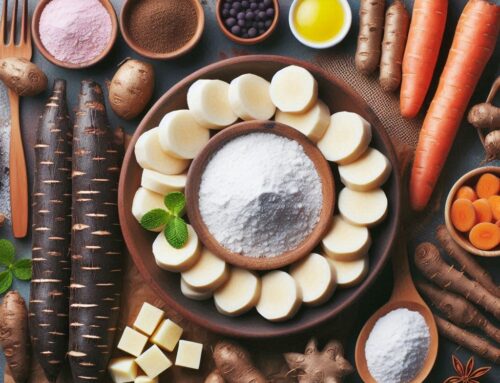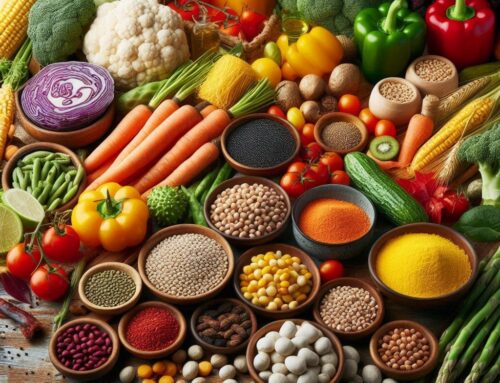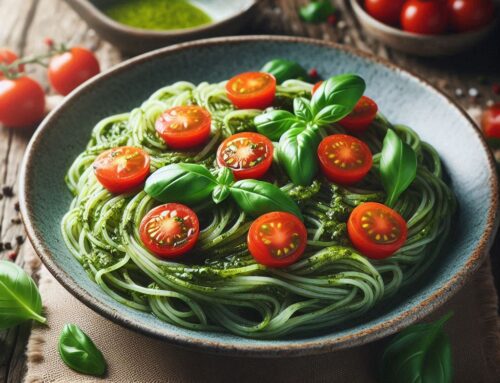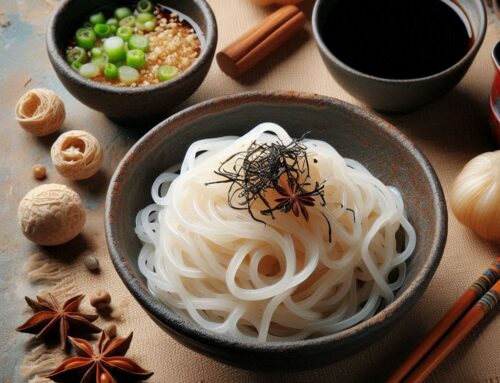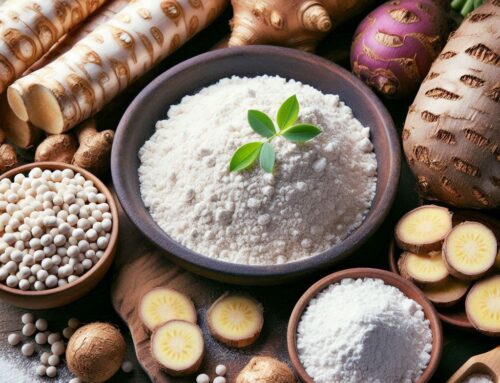
Introduction: Discover the Delight of Konjac Dumplings
Konjac dumplings are a delightful twist on traditional dumpling recipes, offering a healthy and low-calorie alternative for those looking to enjoy their favorite comfort food without the guilt. Made from konjac flour, these dumplings are not only delicious but also packed with numerous health benefits that make them an attractive choice for health-conscious individuals.
One of the primary advantages of konjac dumplings is their low-calorie content. Konjac flour is derived from the root of the konnyaku plant, which is naturally high in glucomannan—a type of dietary fiber known for its ability to promote satiety and aid in weight management. This makes konjac dumplings an excellent option for those seeking to maintain or lose weight while still enjoying flavorful meals.
In addition to being low in calories, konjac offers several other health benefits. It can help regulate blood sugar levels, improve digestive health by promoting regular bowel movements, and even support heart health by reducing cholesterol levels. These attributes make incorporating konjac into your diet a smart choice beyond just its use in dumplings.
Preparing a healthy dumpling recipe using konjac flour can be an exciting culinary adventure. The dough made from this ingredient has a unique texture that pairs well with various fillings—ranging from savory meats and vegetables to sweet options like fruit or chocolate—for versatile meal options that cater to diverse tastes.
Whether you’re new to the world of healthy eating or simply looking for innovative ways to enjoy classic dishes, discovering the delight of konjac dumplings can be both rewarding and satisfying. With their impressive nutritional profile and delectable taste, they stand out as a must-try addition to any food lover’s repertoire.
Understanding Konjac: The Star Ingredient in Your Dumplings
Konjac, a staple in Asian cuisine, is gaining popularity worldwide as a versatile and nutritious ingredient. But what exactly is konjac? Derived from the root of the Amorphophallus konjac plant, this unique ingredient is often used to create low-calorie and high-fiber foods. Konjac itself is composed primarily of glucomannan, a type of dietary fiber that offers numerous health benefits.
One of the standout features of konjac is its impressive nutritional profile. It’s incredibly low in calories yet rich in dietary fiber, making it an excellent choice for those looking to manage their weight or improve digestive health. The fiber in konjac can help regulate bowel movements, lower cholesterol levels, and even stabilize blood sugar levels.
Moreover, the benefits of konjac root extend beyond its nutritional value. Its ability to absorb water and expand makes it an effective natural appetite suppressant. This property can be particularly beneficial for individuals seeking to reduce their calorie intake without feeling deprived.
Incorporating konjac into your diet through dishes like dumplings not only enhances flavor but also boosts your meal’s nutritional value. As more people become aware of what konjac brings to the table, it’s clear why this humble root has become a star ingredient in modern cooking.
Gathering Your Ingredients: What You Need for Homemade Konjac Dumplings
Creating homemade konjac dumplings is a rewarding culinary endeavor that starts with gathering the right ingredients. At the heart of this recipe is konjac flour, a versatile and healthy alternative to traditional flours. Known for its low-calorie content and high fiber, konjac flour provides the perfect base for your dumpling dough.
Before you begin, compile a shopping list for dumplings that includes all essential ingredients. Besides konjac flour, you’ll need water and salt to form the dough’s foundation. For those looking to add color or nutrients, consider incorporating spinach or carrot juice into your mix.
When it comes to dumpling filling ideas, the possibilities are endless. You might opt for classic combinations like pork and cabbage or explore vegetarian options such as mushroom with tofu or spinach with ricotta cheese. Don’t forget aromatics like garlic and ginger to enhance flavor.
Stock up on soy sauce, sesame oil, and rice vinegar if you plan on making dipping sauces. These condiments complement your homemade dumplings perfectly and elevate their taste profile.
By organizing these ingredients ahead of time, you’ll set yourself up for a smooth cooking experience that allows creativity to shine through in every delicious bite of your konjac dumplings.
The Dough Preparation: Crafting the Perfect Konjac Wrapper
Crafting the perfect konjac wrapper begins with mastering the art of dough preparation. Making konjac dough requires attention to detail and a few key techniques to achieve the ideal consistency for your gluten-free wrapper recipe. Start by gathering high-quality konjac powder, which serves as the foundation for your dough.
When mixing, gradually add water to the konjac powder while stirring consistently. This step is crucial in ensuring that you achieve a smooth and pliable texture. One of the most important dough consistency tips is to avoid adding too much water at once, as this can lead to a sticky and unmanageable mixture.
Once mixed, let the dough rest briefly; this allows it to firm up slightly and become easier to handle. If you’re aiming for a specific thickness or elasticity in your wrappers, consider adjusting the amount of water or experimenting with different kneading times.
Ultimately, patience and practice are key when making konjac dough. With these tips in mind, you’ll be well on your way to crafting delicious gluten-free wrappers that are perfect for any dish you wish to prepare.
Create Delicious Fillings: Traditional and Innovative Options to Try
When it comes to crafting the perfect dumpling, the filling is where creativity truly shines. Whether you’re a fan of traditional flavors or eager to explore innovative culinary horizons, there’s a world of delicious possibilities waiting to be wrapped in dough. Let’s delve into some enticing dumpling fillings recipes that cater to both classic tastes and adventurous palates.
For those who cherish tradition, consider starting with a classic pork and cabbage combination. This timeless filling balances savory pork with the subtle sweetness of cabbage, seasoned with soy sauce and ginger for an authentic taste that never disappoints. If you’re looking for vegetarian fillings options, a delightful blend of mushrooms, tofu, and chives offers a hearty and satisfying alternative without sacrificing flavor. The umami-rich mushrooms paired with protein-packed tofu create a filling that’s both nutritious and delicious.
For those seeking protein-rich fillings ideas beyond the usual suspects, think outside the box with options like chicken and lemongrass or shrimp with edamame. These combinations not only provide an excellent source of protein but also introduce fresh flavors that can elevate your dumpling experience to new heights.
No matter your preference—traditional or modern—experimenting with different ingredients allows you to customize your dumplings to suit any occasion or dietary need. So gather your favorite ingredients and let your culinary imagination run wild as you create delectable dumplings that are sure to impress family and friends alike.
The Art of Folding Dumplings: Techniques for Beginners and Experts Alike
Folding dumplings is an art that combines precision, creativity, and a touch of tradition. Whether you’re a novice in the kitchen or an experienced chef looking to refine your skills, mastering the techniques of dough folding can elevate your culinary creations to new heights. The process begins with selecting the right dough—pliable yet sturdy enough to hold fillings without tearing.
For beginners, a simple half-moon fold is an excellent starting point. Begin by placing a spoonful of filling in the center of your wrapper, then moisten the edges with water. Fold the wrapper in half over the filling and press firmly along the edges to seal it shut.
As you gain confidence, you might want to explore pleating dumplings for added texture and visual appeal. A basic pleating technique involves creating small folds along one side of the dumpling while pressing them against the other side’s edge—a method often seen in traditional Chinese dumplings like jiaozi.
To master these techniques thoroughly, follow a step-by-step tutorial that guides you through each stage with detailed instructions and visual aids. This approach ensures that every fold is precise and each dumpling is perfectly shaped—ready for steaming or frying.
Regardless of skill level, practicing different dough folding techniques not only enhances your cooking repertoire but also connects you with a rich culinary heritage shared across cultures worldwide.
The Cooking Process: Boiling and Steaming Methods Explained
When it comes to preparing dumplings, choosing the right cooking method can significantly impact their texture and flavor. Two of the most popular techniques are boiling and steaming, each offering unique benefits that cater to different preferences.
Boiling is a straightforward method, often favored for its simplicity and speed. To boil dumplings, bring a pot of water to a rolling boil before gently adding the dumplings. This method ensures even cooking and provides a soft texture with a slightly chewy bite. The perfect cooking time for boiled dumplings typically ranges from 6 to 8 minutes, depending on their size and filling.
On the other hand, steaming offers an alternative that preserves more of the dumpling’s natural flavors while maintaining a delicate texture. When steaming, arrange the dumplings in a single layer inside a steamer basket lined with parchment paper or cabbage leaves to prevent sticking. Steam them over simmering water for about 10 to 12 minutes until they are fully cooked through.
In comparing steaming vs boiling dumplings, it’s important to consider your desired outcome: boiling tends to yield plumper results with moister fillings, while steaming produces lighter and more tender dumplings with concentrated flavors. By understanding these cooking methods for dumplings and experimenting with them, you can achieve delightful results tailored to your taste preferences every time you prepare this beloved dish.
Troubleshooting Common Issues with Konjac Dumplings
When it comes to making konjac dumplings, even the most experienced cooks can encounter a few hiccups along the way. Understanding and troubleshooting common issues can make all the difference in achieving that perfect texture and flavor.
One prevalent issue is dough consistency. If your dough feels too sticky or too dry, it can be challenging to work with. A sticky dough often results from excess moisture; try adding a small amount of konjac flour gradually until the desired firmness is achieved. Conversely, if your dough is too dry and crumbly, incorporate a bit more water or oil to bring it together smoothly.
Another common mistake involves overcooking the dumplings, which can lead to a rubbery texture. To avoid this, ensure you monitor cooking times closely and test one dumpling before removing the entire batch from heat.
Finally, flavor imbalances are frequent in konjac recipes due to its unique taste profile. To address this, consider experimenting with different seasonings or sauces that complement konjac’s subtle flavors without overpowering them.
By addressing these common mistakes in your konjac dumpling-making process, you’ll be well on your way to creating delicious and satisfying dishes every time.


